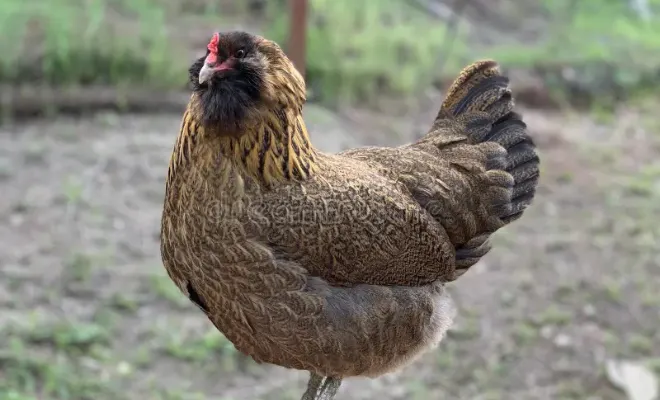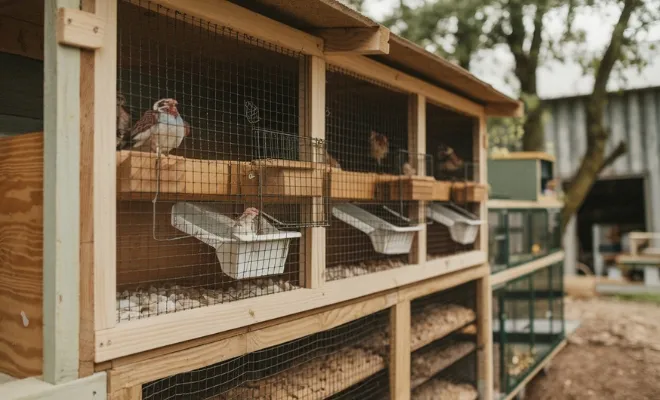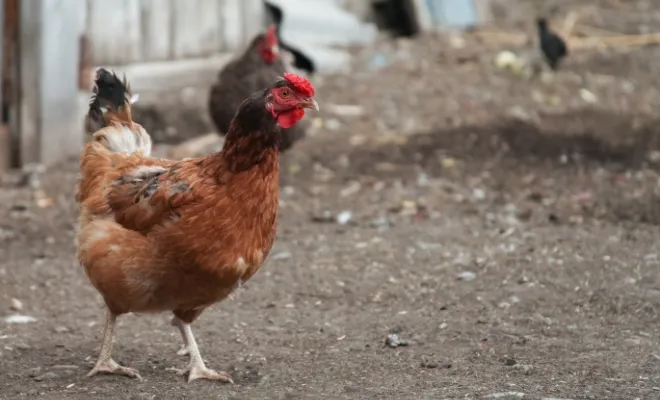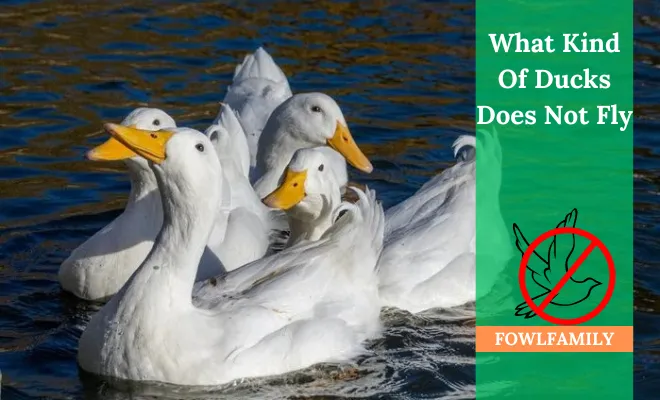Gambel’s Quail Breed – A Ground-dwelling Bird from New World!
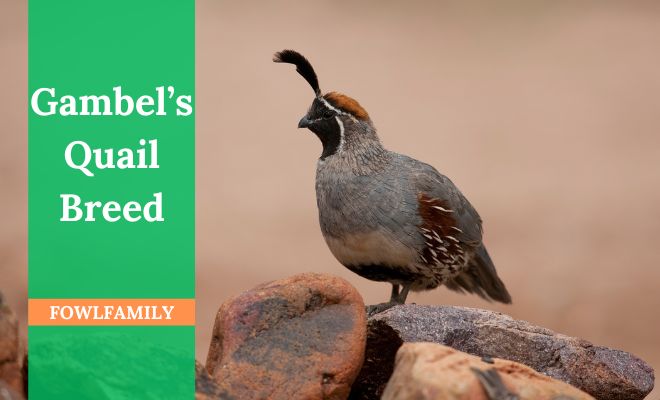
Gambel’s Quail Breed is a charming bird from the southwestern United States. People like them because of their bright feathers and special behaviors. They’re named after an explorer, William Gambel. Later on, the breed got the scientific name Callipepla gambelii.
These quails are friendly and often hang out in groups called coveys, showing they have strong family bonds. They live on the ground and like dry areas with lots of plants. Besides looking nice, people also find them interesting because of their friendly personalities.
Let’s check out other details of such a breed. Read more and understand what purpose meets with the Gambel’s Quail.
Table of Contents
Gambel’s Quail Breed – A Short Profile
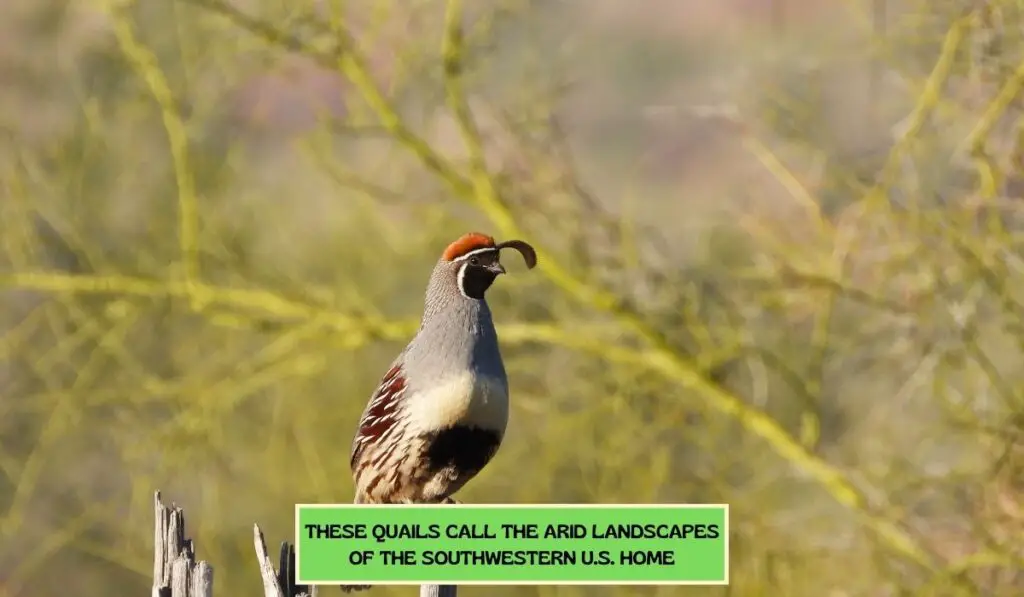
Here is a brief profile that includes key information about Gambel’s Quail. Check this out!
| Characteristic | Details |
|---|---|
| Common Name | Gambel’s Quail |
| Habitat | Arid landscapes, brushy habitats |
| Social Behavior | Forms groups called coveys, strong family bonds |
| Plumage | Colorful with a distinctive topknot plume on the head |
| Length | 10-11.5 inches |
| Weight | 5-6 ounces |
| Wingspan | 14-16 inches |
| Lifespan | 1-2 years |
| Habitat | Desert scrub, chaparral, and arid grasslands |
History And Location Of Gambel’s Quail Breed
Gambel’s Quail is a small ground-dwelling bird in the New World quail family. Gambel’s Quail has a long history in the southwestern United States.
The breed is named after explorer William Gambel. It’s him who discovered and documented this charming bird.
Native Habitat
These quails call the arid landscapes of the southwestern U.S. home. They are often found in regions with brushy habitats, where they feel most comfortable.
Geographical Range
Their range includes states like Arizona, New Mexico, and parts of California and Nevada. Gambel’s Quail is well-adapted to the unique conditions of this diverse and vibrant region.
Physical Appearance of Gambel’s Quail Breed
Gambel’s Quail is a striking bird with vibrant plumage and a special topknot plume on its head. Their colorful feathers make them easily recognizable.
Gambel’s Quail Male Vs Female Appearance
Here are the differences between male and female Gambel’s Quail Breed. Let’s see what distinguishes them.
Male Gambel’s Quail
- More colorful with bold patterns.
- Striking black faces with a white stripe.
- They are larger and have more pronounced topknot plumes.
Female Gambel’s Quail
- Subtler with muted colors.
- No bold facial markings.
- Females are smaller and have less pronounced topknot.
What are the Shared Traits of male and female Gambel’s Quail?
Both males and females have:
- Compact bodies.
- Short wings.
- A cool forward-curling plume on their heads.
Have a look at this unique looking Quail breed for visual understanding.
The Personality of the Gambel’s Quail Breed
Gambel’s Quail is a social bird that likes to be with other quails in a group. People often prefer to keep them as pets or for their other purposes. But you need to know their personality first.
Social Birds
Gambel’s Quail are social birds that enjoy being with other quails in a group. People often like to keep them as pets or for other reasons. But it’s important to understand their personality first.
Living Together
They are known for their friendly and interesting personalities. Gambel’s Quail likes to gather in groups called coveys. So, you may see strong family bonds and working together.
Where They Live
These birds prefer dry areas and places with lots of plants. Even though they are small, Gambel’s Quail is tough. They can live in different environments.
With People
These quails are friendly with humans too. People who enjoy birds often like having them as pets. Watching their lively personalities helps us learn more about them.
Reproduction And Breeding Of Gambel’s Quail Breed
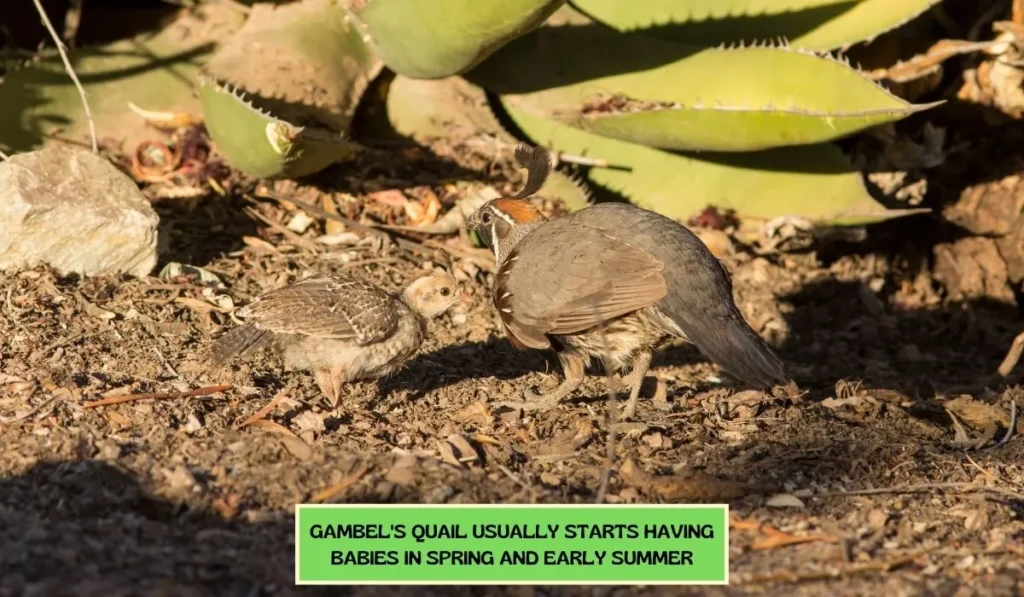
Gambel’s Quail has a cool way of growing their quail family. They do special things when it’s time to have baby quails.
When does Gambel’s Quail start breeding?
Gambel’s Quail usually starts having babies in spring and early summer.
During this time, the male quails show off their colorful feathers. Also, they make sounds to get the attention of the girl quails. You may see them making form pairs, and the female quail finds a secret place to lay her eggs.
This happens when the weather is warm and everything in nature is ready. It ensures the baby has a good chance to grow up strong. Obviously with plenty of food and shelter!
How long does it take for a Gambel’s Quail to hatch?
It takes about 21 days for a Gambel’s Quail egg to hatch. The female quail carefully keeps the eggs warm. It’s until the baby quails are ready to come out. After this period, the eggs hatch, and the chicks emerge.
How To Breed Gambel’s Quail?
Raising Gambel’s Quail Breed is not an easy task as far as I know. But if you have expertise in keeping such birds, you’re good to go. However, here are my guidelines for you!
- Courtship and Pairing: During the breeding season in spring and early summer, observe the courtship rituals. Males display vibrant plumage and call out to attract females. Allow them space and time to form pairs naturally.
- Nesting Area: Create a suitable nesting area with hidden spots. For example – bushes or sheltered corners. Provide materials like twigs and grass for the female to build a nest.
- Egg Laying: Once paired, the female will lay a clutch of eggs in the nest. Ensure a calm environment to minimize disturbances during this crucial period.
- Incubation: The female will incubate the eggs for approximately 21 days. Ensure she has a quiet and secure space to care for the eggs without disturbances.
- Chick Care: After hatching, chicks are precocial and able to move around shortly after birth. Provide a safe and warm environment for the chicks. Also, ensure their access to proper nutrition.
- Environment: Maintain a suitable habitat with enough space, hiding spots, and a balanced diet. Gambel’s Quail thrives in arid landscapes with brushy habitats.
How Many Eggs Do Gambel’s Quail Lay?
Female Gambel’s Quail typically lays a clutch of about 10 to 12 eggs. Gambel’s Quail doesn’t necessarily lay eggs throughout the entire year.
The frequency of egg-laying depends on various factors including
- Environmental conditions
- Availability of resources
- The health of the quails.
Typically, they breed once a year during the breeding season.
Which Color Eggs Do Gambel’s Quail Lay?
Gambel’s Quail lays eggs that are light tan or cream in color. However, the exact shade may differ. But these eggs usually have a natural and earthy tone.
The color helps them hide in their surroundings. So, it keeps the eggs safe while the baby quails develop. This adaptation is important because it makes it harder for predators to find and harm the eggs in the wild.
How many years do Gambel’s Quail lay?
Gambel’s Quail typically lays eggs for about 1 to 2 years. After this period, the ability to lay eggs tends to decrease.
However, the lifespan of Gambel’s Quail can be influenced by various factors. Individual quails may differ in their reproductive capabilities.
What Purpose Does Gambel’s Quail Breed Serve the Best for?

Gambel’s Quail serves various purposes. But keeping them as a pet is a little challenging as I said before. Anyway, let’s see what other purposes they can meet.
Helping Nature
Quails play a role in nature by eating seeds and spreading them, helping plants grow, and keeping the environment in balance.
Watching Wildlife
For nature lovers and bird watchers, Gambel’s Quail is interesting to watch. Their behaviors and colorful feathers make them fun to study and enjoy.
Gambel’s Quail as a Game Bird
Gambel’s Quail is a popular game bird. So, they are valued for the challenging hunting experience and delicious, edible meat. Hunters appreciate their elusive nature. Also, the thrill of pursuing these birds in diverse landscapes.
Some people hunt Gambel’s Quail for fun. But it’s carefully controlled to make sure it doesn’t harm their population. This helps keep a balance in the quail community.
Pet Companions
While it’s a bit tricky, some people keep Gambel’s Quail as pets. Taking care of them properly is important for their happiness and health.
Learning from Quails
Scientists study Gambel’s Quail to understand more about how birds behave, reproduce, and live in their environment. This helps us learn more about the natural world.
7 Expert Tips to Raise Gambel’s Quail Breed
Raising Gambel’s Quail involves careful attention to their needs and natural behaviors. Here’s a simplified guide:
- Habitat Setup: Create a suitable home for Gambel’s Quail. Provide a secure and well-ventilated enclosure with hiding spots, like bushes or shelters, and enough space for them to move around.
- Ideal Feeding: Offer a balanced diet, including commercial quail feed, seeds, and insects. Fresh water should always be available. Mimic their natural diet to keep them healthy.
- Social Environment: Gambel’s Quail are social birds, so keep them in groups called coveys. Ensure they have enough space to move around and interact with each other.
- Nesting Area: If breeding is a goal, provide nesting areas with suitable materials like twigs and grass. Allow natural behaviors to unfold during the breeding season.
- Protection from Predators: Build a secure enclosure to protect them from predators. This helps ensure their safety and well-being.
- Observation and Interaction: Spend time observing your quails and interacting with them gently. This helps build trust and allows you to notice any changes in their behavior or health.
- Veterinary Care: Schedule regular check-ups with a veterinarian who has experience with birds. This ensures early detection of any health issues.
Pros And Cons of Having Gambel’s Quail Breed
I cannot say Gambel’s are ideal birds for any purpose. They have good and bad on both sides. Here’s a breakdown!
Pros of Gambel’s Quail
- Gambel’s Quails are hardy and adaptable
- They are sedentary and don’t need a lot of space or high fences
- With their pleasing looks and distinctive call, they bring aesthetic appeal
- Gambel’s Quail eggs are edible, offering a potential food source
Cons of Gambel’s Quail
- Gambel’s Quail are easily stressed and prefer a calm and quiet environment
- They need protection from predators, diseases, and parasites
- They are not highly productive
- Gambel’s Quail are friendly but a little reserved and shy
FAQs
Check out the following queries to have more facts about Gambel’s Quail Breed.
Q. What is the difference between Gambel Quail and California Quail?
Gambel’s Quail and California Quail are distinct species, though they share similarities. However, the major difference is in their habitat preferences.
Gambel’s Quail are often found in the desert regions of the southwestern United States. While California Quail inhabits coastal areas and foothills.
Q. What does a Gambel Quail sound like?
Gambel’s Quail produces a distinctive call described as “chi-ca-go-go.” It’s a pleasant and rhythmic sound heard during their various social interactions.
Q. Where can I find Gambel Quail for sale?
Gambel’s Quail is sometimes available for sale through reputable breeders, bird farms, or online platforms. However, it’s crucial to ensure that sellers adhere to ethical and legal standards.
Local bird clubs, agricultural fairs, or animal rescue organizations may also provide information on getting Gambel’s Quail.
Related Reads:
- King Quail Breed: The Smallest and Most Popular Bird to Keep
- All About California Quail Breed
- Coturnix Quail Breed
- Guide To Raising The Harlequin Quail Breed
Final Word
So, Gambel’s Quail Breed is a fascinating bird known for its colorful feathers. Their attractive looks and interesting behavior make them special. Named after explorer William Gambel, these birds are family-oriented and enjoyable to watch. It’s when you can pet them with a little challenge.
Despite being a bit shy, Gambel’s Quail has different uses. For example – being watched in nature or for controlled hunting. If you want to raise them, be careful with their home, food, and care to keep them happy and healthy.


